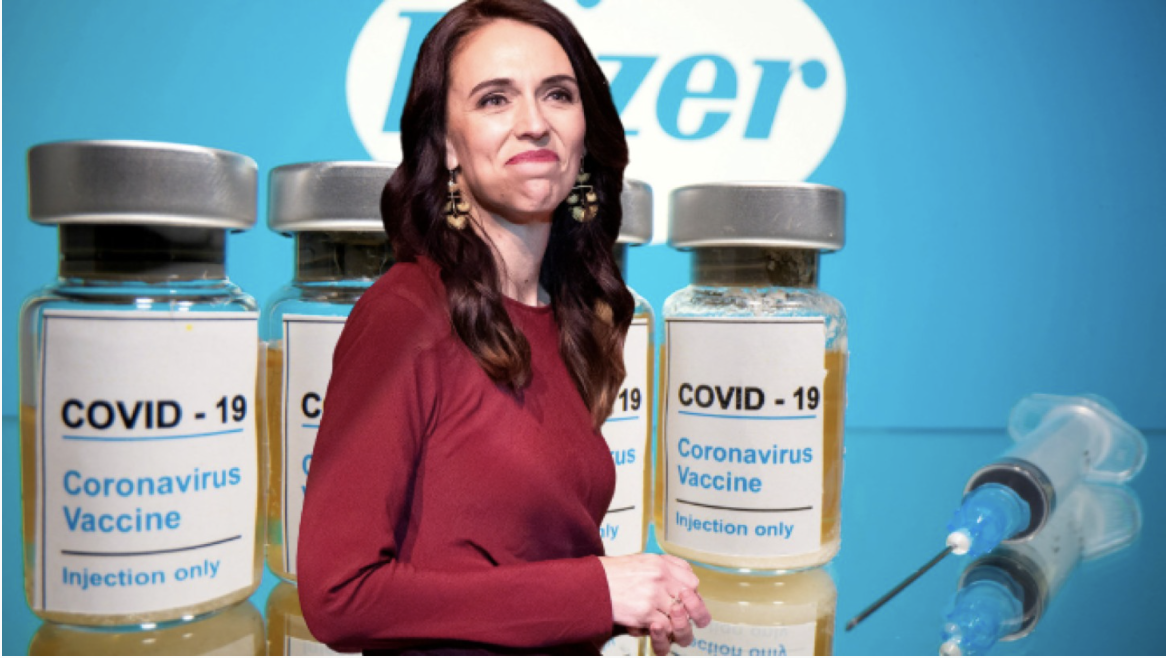I am a nerd and I do statistics as a hobby! For the record, I am double-jabbed based on an assessment of my personal risk but I am absolutely pro-choice because the risk for many other people is more from the vaccine than the virus. The abuse of the unvaccinated is insane given that vaccinated people are still contagious.
Unlike Jacinda, I have actually read Pfizer’s scientific report on the vaccine trial. I have checked the data. I will leave you to reach your own conclusions about the sanity of the global vaccine roll-out.
The science was published in the New England Journal of Medicine on 10 December 2020, nearly a month AFTER Pfizer’s press release announcing the “success”.
The press release on 18 November 2020 started with “Data demonstrate vaccine was well tolerated across all populations with over 43,000 participants enrolled”.
The scientific report does indeed show that over 43,000 participants were enrolled, but only 37,706 completed the trial. The enrolled number is utterly irrelevant.
Half the participants were in a placebo group, so the truth is that fewer than 19,000 received the vaccine. That is a big difference from the press release headline. [ Editor’s note: that’s is how randomised controlled trials are conducted].
Fortunately for participants, but unfortunately for scientists and the rest of us, it is medically unethical to deliberately infect people with the virus. This means the number of participants is irrelevant. The question we all want to answer concerns only those who have been exposed to covid.
Doing nothing is 100% effective for those who are never exposed to the virus.
In the short 4-week period between the first injection and the final test for infection, just 170 cases of covid occurred. This is the relevant data set, not 43,000 enrolments.
By comparison, government stooges have rejected ivermectin trials on 200 hospitalisations because the case number was too small.
Pfizer chose to use the relative risk in this tiny group to claim a 96% efficacy in stopping transmission, but the absolute risk reduction was 0.4%. Statistics can be very misleading.
The claim that the vaccine stopped transmission was a lie. Anyone who understood how coronaviruses live and how mRNA vaccines work knew from the outset that the virus could exist in and be spread from the nasal passages while the vaccine only affects the virus in the bloodstream. Its purpose was only ever to reduce severe illness, i.e. hospitalisation.
The number of hospitalisations in Pfizer’s trial was 10. This is the result data. 1 vaccinated person and 9 unvaccinated. Not 43,000. Yes, there were fewer vaccinated people ending up in hospital than unvaccinated. But the same data could be presented another way: 8 fewer people out of 37,706 means the absolute risk reduction of hospitalisation was 0.04% or 1 in 2,500 in any 4-week period.
The technical term for a data set of this size is not statistically significant, yet it is being used to drive global policy. Is this reasonable?
None of the hospitalised people died. Let that sink in. Imagine a headline, Pfizer’s massive trial shows vaccine did not save a single life.
Not surprisingly, the press release minimised the side effects, noting only headaches and fatigue affecting 6% of recipients.
However, the scientific paper records nearly all recipients (up to 83%) suffering pain after the vaccine, and over 50% getting headaches and fatigue. The press release figures were for severe cases of headaches and fatigue. That is an important word to conveniently omit from the press release. Fever was also reported in 16% of cases.
Side effects were only monitored for 2 months, with a quarter of participants dropping out of the monitoring, so data are of low quality. Long term effects are not known.
One of the vaccine recipients died from cardiac arrest, although doctors did not conclude it to be related to the vaccine. However, doctors did attribute one case of right-leg paralysis and one case of heart arrhythmia to the vaccine.
The published report states that the trial is “not large enough to detect less common adverse events reliably.”
None of what I have written is medical misinformation – it is statistical information using the actual published results from Pfizer. It cannot be disputed.
I am not recommending for or against the vaccine. The purpose of this article is solely to ask the following questions:
- Would you have based government policy on this study?
- Can you trust the government to make decisions for you?

